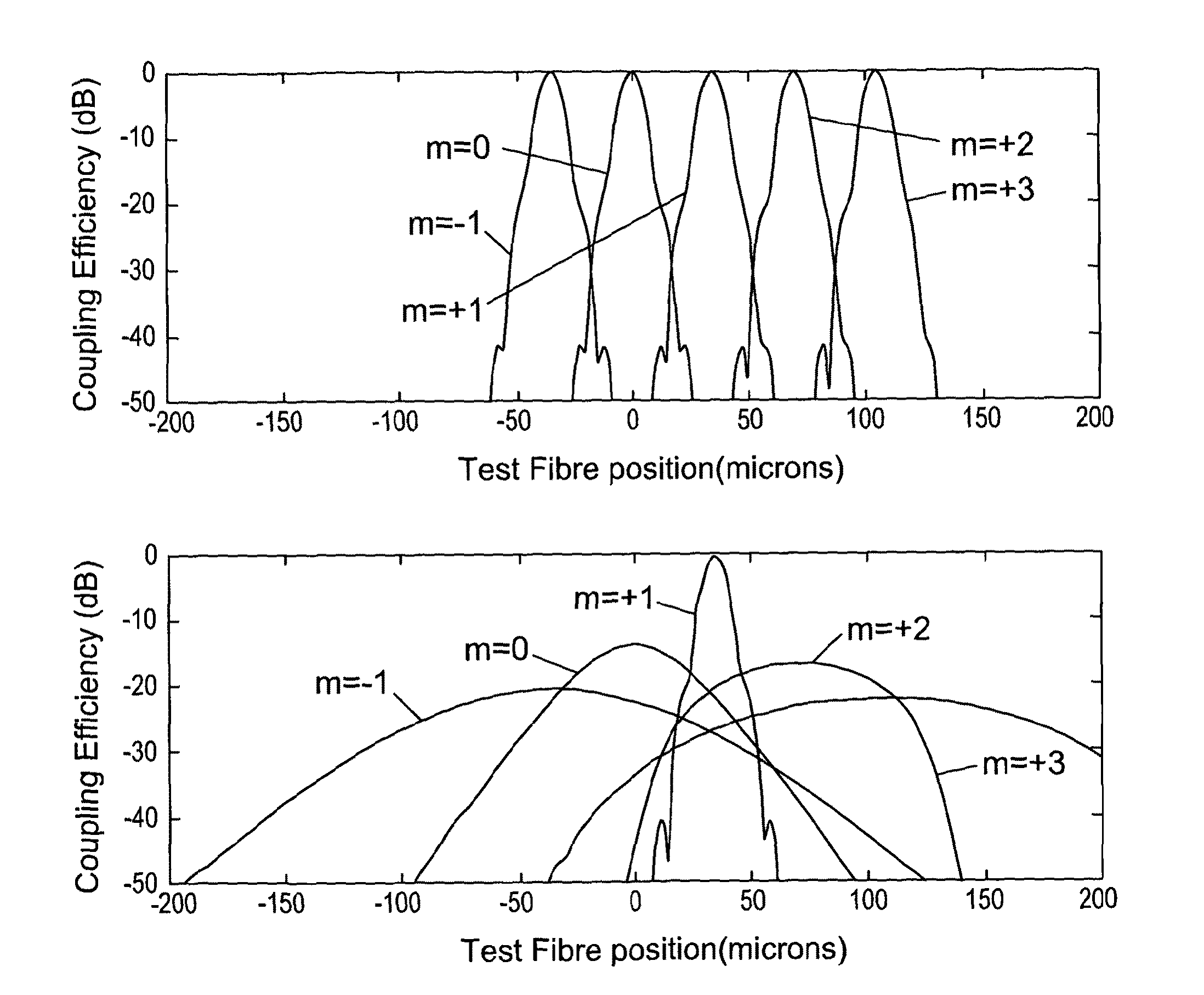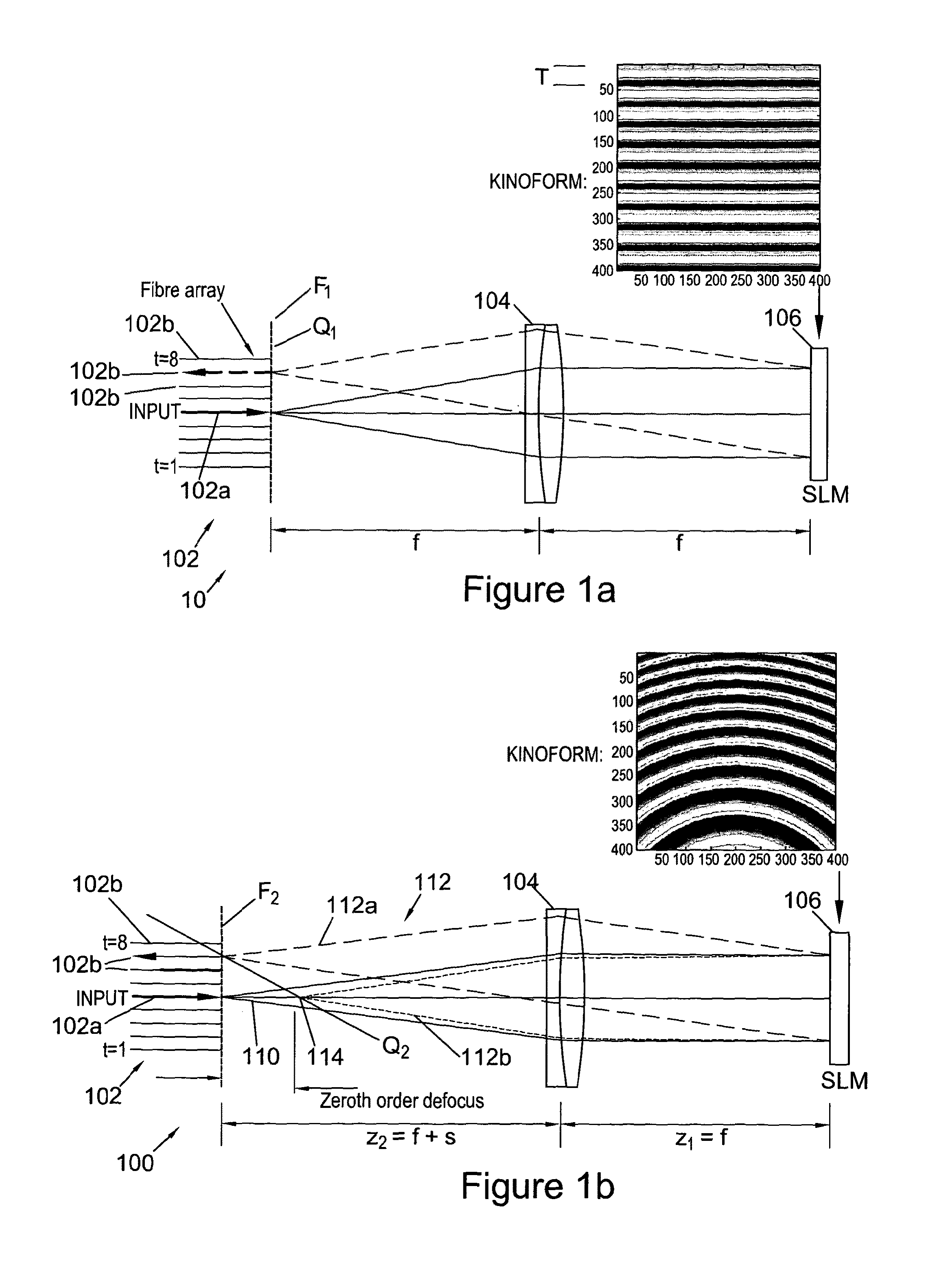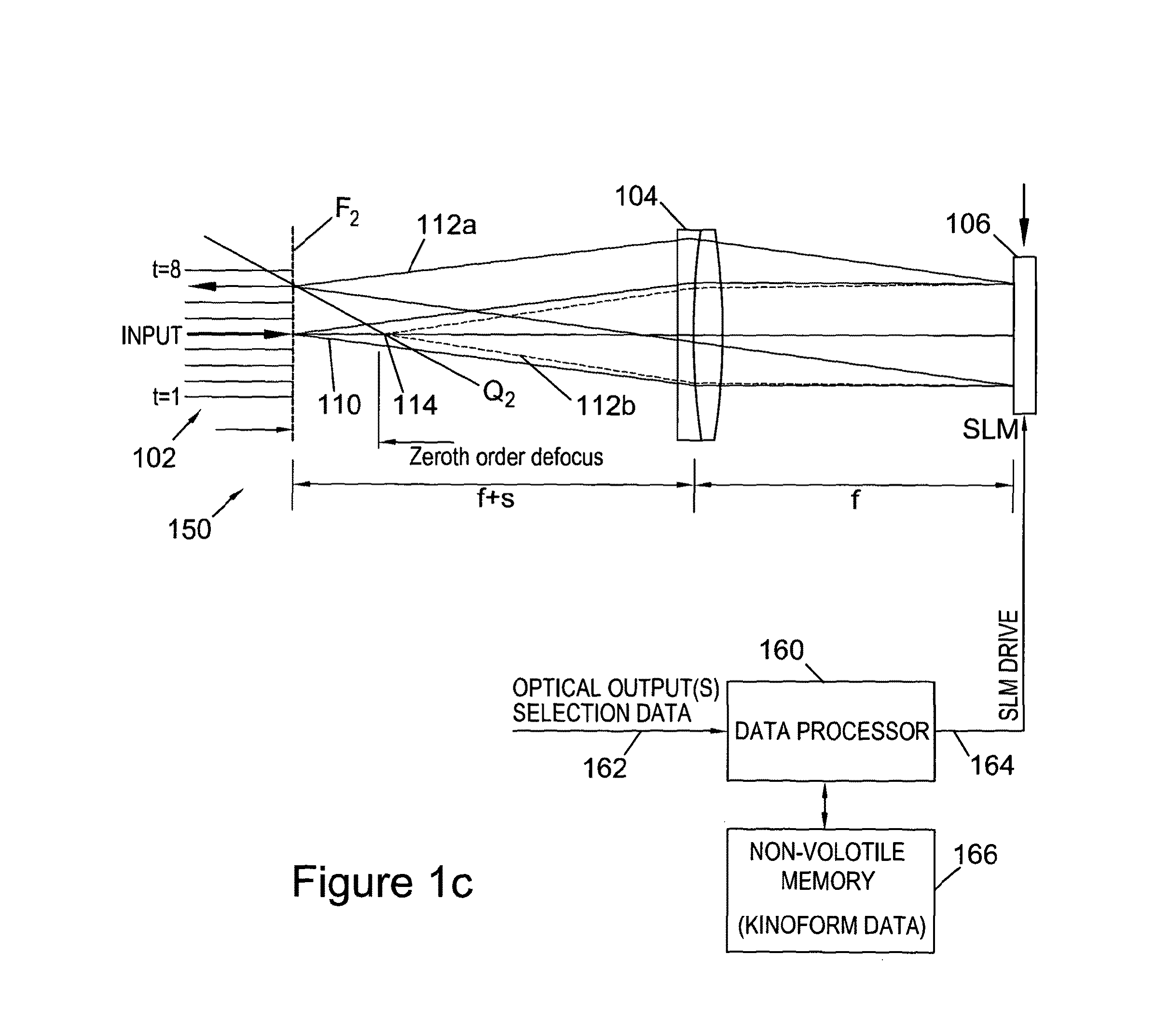Optical beam routing apparatus and methods
a technology of optical beams and apparatuses, applied in multiplex communication, data switching networks, instruments, etc., can solve problems such as significant power being diffracted into unwanted diffraction orders
- Summary
- Abstract
- Description
- Claims
- Application Information
AI Technical Summary
Benefits of technology
Problems solved by technology
Method used
Image
Examples
case 1
zation of a Kinoform in a Fourier Plane System Using the Gerchberg Saxton Algorithm
[0105]FIG. 16a shows the replay field and FIG. 16b the subsequent kinoform pattern, when we use the Gerchberg Saxton algorithm to optimize the phase pattern. This is an example of a “ping-pong” algorithm. The program used to generate the kinoform was based on Matlab code, which has the basic form:
gin = Amplitude distribution of input field (Gaussian profile assumed)grossout = Desired output field (the target function). For example,if we have GNaddressable output pointsgrossout = zeros(GN);grossout(position 1) = 1;grossout(position 2) = 1;Sets two points to have equal amplitude and the other points zeroamplitudegprime = Kinoform phase patternfor ite=1:200 if ite==1 % start with result of geometrical ray-tracing (initial startingpoint - FFT of input field) ftg=fftshift(fft(fftshift(gin))); else % All other iterations use this (FFT of input field×exp(i*phase of hologram)) ftg=fftshift(ff...
case 2
zation of a Kinoform in a Defocused System Using a Modified Gerchberg-Saxton Algorithm
[0108]To optimize the replay field using a fractional FFT of order a, written as FrFFT[field, a], we can modify the Gerchberg Saxton “ping-pong” algorithm as follows below (other algorithms, in particular other “ping-pong” algorithms may alternatively be employed).
gin = Amplitude distribution of input field (Gaussian profile assumed)grossout = Desired output field (the target function). For example,if we have GNaddressable output pointsgrossout = zeros(GN);grossout(position 1) = 1;grossout(position 2) = 1;Sets two points to have equal amplitude and the other points zeroamplitudegprime = Kinoform phase patternfor ite=1:200 if ite==1 % start with result of geometrical ray-tracing (initial startingpoint - FFT of input field) ftg=FrFFT(gin, a); else % All other iterations use this (FFT of input field×exp(i*phase of hologram)) ftg=FrFFT(gin.*exp(i.*gprime, a); end % Calculate the ph...
PUM
 Login to View More
Login to View More Abstract
Description
Claims
Application Information
 Login to View More
Login to View More - R&D
- Intellectual Property
- Life Sciences
- Materials
- Tech Scout
- Unparalleled Data Quality
- Higher Quality Content
- 60% Fewer Hallucinations
Browse by: Latest US Patents, China's latest patents, Technical Efficacy Thesaurus, Application Domain, Technology Topic, Popular Technical Reports.
© 2025 PatSnap. All rights reserved.Legal|Privacy policy|Modern Slavery Act Transparency Statement|Sitemap|About US| Contact US: help@patsnap.com



